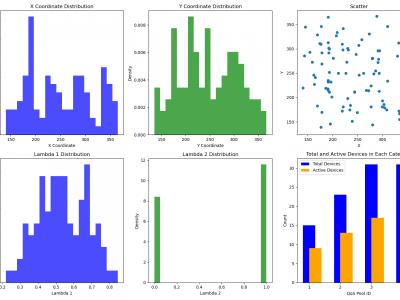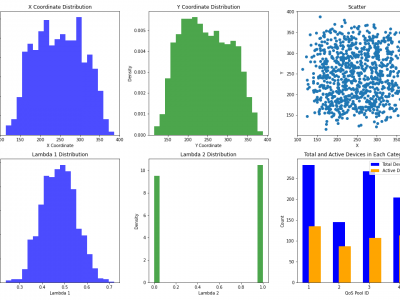Datasets
Open Access
Pairwise Characteristics between Vehicles in Vehicular Networks

- Citation Author(s):
- Submitted by:
- Dr. Farooque Kumbhar
- Last updated:
- Tue, 05/17/2022 - 22:21
- DOI:
- 10.21227/fbwq-e603
- Data Format:
- Link to Paper:
- License:
 831 Views
831 Views- Categories:
- Keywords:
Abstract
Vehicular networks have various characteristics that can be helpful in their inter-relations identifications. Considering that two vehicles are moving at a certain speed and distance, it is important to know about their communication capability. The vehicles can communicate within their communication range. However, given previous data of a road segment, our dataset can identify the compatibility time between two selected vehicles. The compatibility time is defined as the time two vehicles will be within the communication range of each other. Our data set observe 500 seconds of data in a 2.5 x 1.5 KM area, populated with SUMO traffic traces. Each vehicle is assumed to have a communication range of 50 meters. The dataset contains the relation of each pair of vehicles in a mesh system where each vehicle is compared with every other vehicle for a total of 500 seconds. Our dataset is one of its kind to predict the compatibility of vehicles with each other.
Note: If you are using this then do cite our work. https://ieeexplore.ieee.org/abstract/document/9186099
F. H. Kumbhar and S. Y. Shin, "DT-VAR: Decision Tree Predicted Compatibility based Vehicular Ad-hoc Reliable Routing," in IEEE Wireless Communications Letters, doi: 10.1109/LWC.2020.3021430.
Each row contains characteristic information related to two vehicles at time t. Data set feature set (column headings) are as follows:
- Euclidean Distance: The shortest distance between two vehicles in meters
- Relative Velocity: The velocity of 2nd vehicles as seen from 1st vehicle
- Direction Difference: Given the direction information of each vehicle, the direction difference feature identifies the angle both vehicles are moving towards. For instance, two vehicles going on the same road can have direction difference 0, whereas two vehicles moving in the opposite direction will have a difference of 180. we calculated direction difference using: |((Direction of i - Direction of j+ 180)%360 - 180)| .
- Direction Difference Label: To ease the process for the supervised learning model, we also included direction difference label information by identifying three possible directions ( 0 if difference < 60, 2 if difference >120 and 1 if none of above)
- Tendency: The Tendency is an interesting label that is required to differentiate between two vehicles which are moving in opposite directions, but either they are approaching each other or moving away from each other.
Target Label (Compatibility time): Our goal is to identify how long two vehicles will be in the communication range of each other. The predicted compatibility time label tells us five possible values:
L0 means Compatibility Time is 0
L1 means Compatibility Time is more than 2 seconds but less than 5 seconds
L2 means Compatibility Time is more than 5 seconds but less than 10 seconds
L3 means Compatibility Time is more than 10 seconds but less than 15 seconds
L4 means Compatibility Time is more than 15 seconds
Dataset Files
datacsv.csv (516.01 MB)
Open Access dataset files are accessible to all logged in users. Don't have a login? Create a free IEEE account. IEEE Membership is not required.








